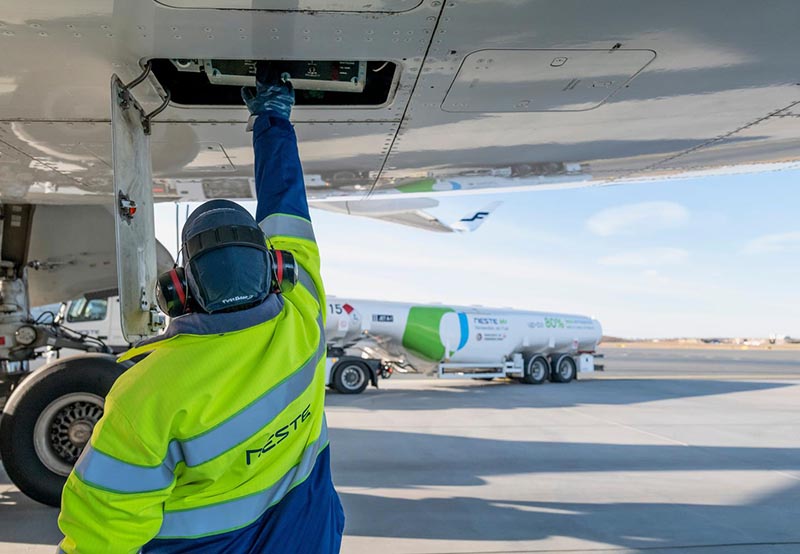
United States clears the runway for ethanol in sustainable aviation fuel
Sustainable aviation fuel (SAF) primarily relies on used cooking oil (UCO) as a feedstock, blending it into traditional jet fuels to reduce carbon emissions in aviation. However, UCO’s use is limited by collection issues, supply constraints, price volatility, and incidents of fraud where virgin oils are mislabelled as used to exploit higher ‘green’ prices. SAF derived from UCO can be up to four times more expensive than traditional jet fuel. Despite these challenges, SAF is seen as a crucial component in decarbonising the aviation sector, which contributes 3% of global emissions. Investment in SAF technologies is growing worldwide.
SAF production in the United States
In the United States, SAF production remains minimal. The U.S. Environmental Protection Agency (EPA) reported that only 24.5 million gallons of SAF were consumed domestically in 2023, far short of President Joseph Biden’s goal of three billion gallons per year by 2030.

Ethanol’s role and legislative support
Geoff Cooper, president of the Renewable Fuels Association, asserts that achieving the 3-billion-gallon target is impossible without incorporating corn ethanol. The Inflation Reduction Act, signed into law on August 16, 2022, is a significant legislative effort to promote clean energy and green manufacturing. The act offers federal tax credits ranging from USD1.25 to USD 1.75 per gallon for SAF that reduces greenhouse gas emissions by 50% compared to traditional jet fuels. Until recently, ethanol was excluded from these tax credits due to sustainability concerns.
On April 30, 2024, the U.S. Treasury issued new guidance, allowing ethanol and soy-based biofuel producers to qualify for these tax credits. This change recognises the role of farmers in reducing greenhouse gas emissions and encourages their participation in new fuel production.
To qualify for tax credits, ethanol producers must adopt several climate-smart agricultural practices, such as no-tilling, using cover crops, enhanced efficiency fertilisers, carbon capture and storage, and low-emissions natural gas and renewable electricity in production processes. These practices aim to reduce soil erosion and emissions, improving overall sustainability.
Industry reactions
The announcement has received mixed reactions. While the Renewable Fuels Association is optimistic about the potential for ethanol in the SAF market, it expresses concern over the additional requirements for climate-smart practices. Kailee Buller, CEO of the National Oilseed Processors Association, worries that these requirements might limit opportunities.
Environmentalists, however, are concerned about deforestation and increased farmland use for fuel production, arguing that converting land to cornfields underestimates the emissions impact. They also point out that the European Union does not permit corn-based ethanol to qualify as SAF.

Future prospects
The future of ethanol-based SAF depends on several factors, including the adoption of electric vehicles (EVs) and the outcome of the 2024 U.S. presidential election. A shift towards EVs could reduce ethanol demand, while political changes could influence ethanol supply and land use.
The method for accounting lifecycle emissions remains contentious. The proposed Greenhouse Gases Regulated Emissions and Energy Use in Technologies (GREET) methodology measures SAF production’s lifecycle greenhouse gas emissions, but environmental groups prefer a stricter United Nations’ International Civil Aviation Organisation methodology.
Given the expiration of current regulations at the end of the year, re-evaluation post-election is inevitable.








